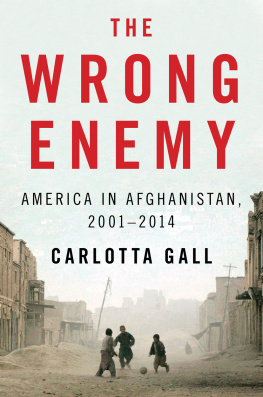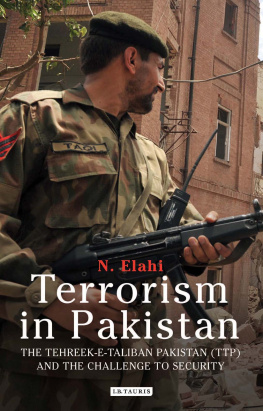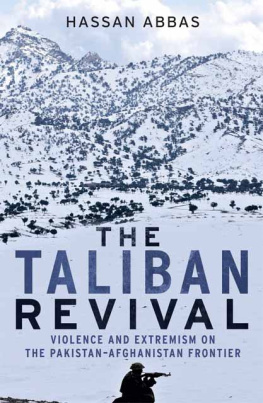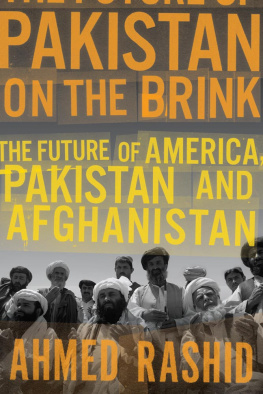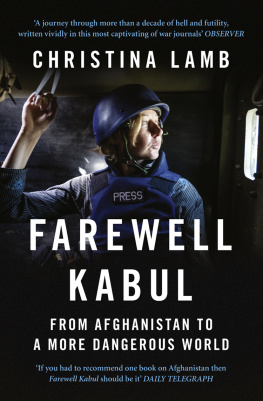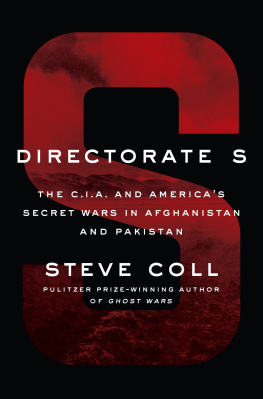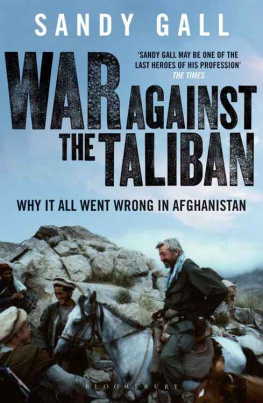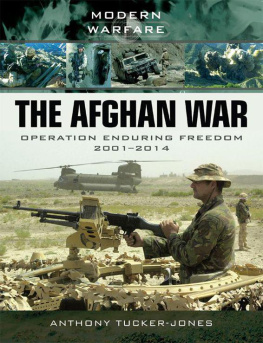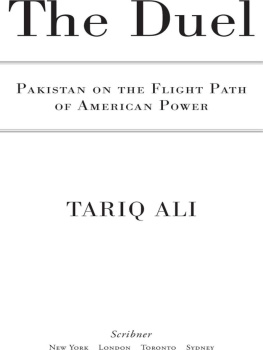Copyright 2014 by Carlotta Gall
All rights reserved
For information about permission to reproduce selections from this book, write to Permissions, Houghton Mifflin Harcourt Publishing Company, 215 Park Avenue South, New York, New York 10003.
www.hmhco.com
Library of Congress has cataloged the print edition as follows:
Gall, Carlotta, author.
The wrong enemy : America in Afghanistan, 20012014 / Carlotta Gall.
pages; cm
Includes bibliographical references and index.
ISBN 978-0-544-04669-6
1. Taliban. 2. Afghan War, 2001 3. PakistanPolitics and government. 4. AfghanistanPolitics and government. 5. Pakistan. Inter Services Intelligence. 6. Qaida (Organization) 7. United StatesForeign relationsPakistan. 8. PakistanForeign relationsUnited States. 9. United StatesForeign relationsAfghanistan. 10. AfghanistanForeign relationUnited States. I. Title.
DS371.412.G35 2014
958.104'7dc23 2013044257
e ISBN 978-0-544-04568-2
v1.0414
For my father, Sandy Gall, who showed me the way in Afghanistan and encouraged me to write this book, and for my mother, Eleanor Gall, who gave me the spirit of adventure.
And in memory of Sultan Munadi (19752009), best of friends and colleagues, kidnapped by the Taliban and killed in a rescue attempt.
We may be fighting the wrong enemy in the wrong country.
The late Richard C. Holbrooke, U.S. special representative
to Afghanistan and Pakistan
Foreword
I arrived in the town of Mazar-i-Sharif in northern Afghanistan on a cold evening in November 2001, just days after the Taliban had fled. Two months had passed since the attacks of 9/11 and one month since America had gone to war in Afghanistan. The U.S. Air Force had been bombing Afghanistan since October 7, set on chasing down al Qaeda and toppling the Taliban government that harbored its leaders. I had crossed the strictly controlled border from Uzbekistan thanks to an Afghan friend. I had not seen him for six years, but he had helped my father travel into Afghanistan during the Soviet occupation and decided to help his friends daughter cover this war. It was one of the reasons I came to love the Afghans. Friendship and loyalty mattered.
I had visited Mazar-i-Sharif several times in the 1990s and knew it as a busy trading town, its streets spanning out from the glorious turquoise dome and tiled walls of the Shrine of Hazrat Ali in its central square. I was shocked at how impoverished the city and its inhabitants had become. They had suffered two terrible massacres in four years under the Taliban and lived under virtual blockade. Thousands of families, displaced by the war and Afghanistans worst drought in decades, had moved to the city in search of work and food. The streets were clogged with horsecarts, street stalls, and laborers pulling loads through the potholes. Families carrying children in their arms stepped through the mud to the central hospital. Scores of women begged on the mud-slicked streets, their faces hidden behind the lattice screen of the burqa, the head-to-toe pleated veil that turned women into soulless beings. The only part of their body visible was a calloused hand stretched out to passersby. Everyone was cold and hungry. The restaurants and tea shops were empty because of Ramadan. Street stalls sold imported fruit juice and stale biscuits, but there was not an egg to be had in the whole city.
I was reporting for the New York Times, one of two dozen correspondents scrambled and sent to the region in the weeks after 9/11. I would end up staying for over a decade, engrossed in Americas struggle in Afghanistan. The Afghans would overthrow the Taliban and embrace peace, only to falter and slip back, dragged into a fight that few of them wanted. I packed up and left my previous post in the Balkans and went to live in Kabul, staying with the story even as the worlds attention was drawn away to Iraq. For me, Afghanistan was always the most important news story of the time. It was where 9/11 began and would finally be answered. It was where my reporting life had started, and from where rose this great wave of Islamism that has powered many of todays wars.
By 2001, I had been reporting on wars for nearly eight years: five in Russia where I covered the war in Chechnya closely, and three in the Balkans, chronicling the war in Kosovo and the fall of Slobodan Miloevi for the New York Times. At the time of 9/11, I was reporting on NATOs most pressing concern, an incipient guerrilla movement in Macedonia on the border with Kosovo. I watched the attack on the twin towers with fellow journalists in a hotel bar in Skopje. I knew immediately that Osama bin Laden was behind the attacks. I knew the story would lead back to Afghanistan, and I felt dread for the Afghans.
Afghanistan had featured large in my life for nearly twenty years, ever since the early days of the Soviet invasion. As a Russian language student, I had met drunken Red Army soldiers back from Afghanistan in a Soviet bar. The war was never officially acknowledged, but those conscripts told hair-raising stories of Afghan guerrillas mutilating soldiers caught on the battlefield. I heard the other side of the story from my father, a British television journalist who was in Afghanistan with the mujahideen, and brought back pictures of refugees pouring out of the country along donkey trails, villagers taking up arms against Soviet jets and helicopters, and Russian prisoners talking about drug-taking and hazing in the ranks. It was the Soviet Unions VietnamI was fascinated. In the 1990s, I traveled to Pakistan and Afghanistan and saw for myself the harsh mountains and emerald valleys of the Hindu Kush, and met the Afghans, resilient and gracious even in the destitution of the refugee camps.
I came across international jihadis in the Pakistani city of Peshawar then, too. We called them Wahhabis, after the fundamentalist Islamic sect that has its roots in Saudi Arabia. They were rough fighters, Arabs and North Africans who would run us off the roads, and Egyptian and Kuwaiti doctors who showed a hostile arrogance to us Westerners. We did not realize then, but they were the beginnings of bin Ladens al Qaeda. They were often a menace to the Afghans with their militaristic ambitions. After the Soviet withdrawal from Afghanistan, they were looking for a cause.
I saw Wahhabis turn up in Chechnya in 1995 and watched how they transformed the Chechens deserving cause for self-determination into an extremist Islamist struggle. Determined to spark a greater conflagration across the Muslim North Caucasus, the Arabs set Chechens against each other and helped provoke the second war in the republic in 1999, bringing more disaster and destruction down on the small territory. They wrought even greater havoc in Afghanistan and Pakistan. They dreamed of creating an Islamic caliphate stretching across South and Central Asia, home to some 500 million Muslims. Pakistan, the first nuclear-armed Muslim state, would be at its core. Some of us saw and wrote about the extremist trend as it unfolded, but no Western government seemed concerned.
Now, by going to war in 2001, the United States was walking into the Islamists trap. It was just what al Qaeda wanted: for Afghanistan again to serve as a battleground for Muslim fighters against a superpower. The Afghans once more were their unlucky pawns.
It would become Americas longest overt war. Thirteen years later, there is no swift resolution in sight, and support at home has waned. Few Americans seem to care anymore about Afghanistan, and I decided I owed it to all those caught up in the maelstrom of Afghanistan to put down a record of events as I had seen them from the ground.
The war has been a tragedy costing untold thousands of lives and lasting far too long. The Afghans were never advocates of terrorism yet they bore the brunt of the punishment for 9/11. Pakistan, supposedly an ally, has proved to be perfidious, driving the violence in Afghanistan for its own cynical, hegemonic reasons. Pakistans generals and mullahs have done great harm to their own people as well as their Afghan neighbors and NATO allies. Pakistan, not Afghanistan, has been the true enemy.
Next page
